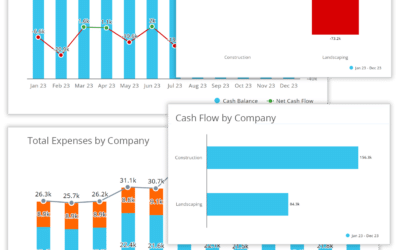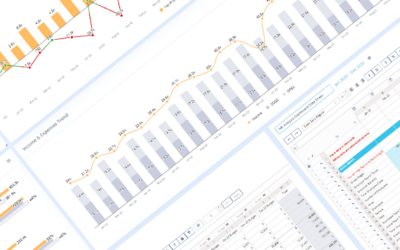
Regardless of what kind of business you are running, understanding business metrics and financial numbers are crucial to running a successful company. You may be lucky enough to have loyal customers, referrals you don’t have time for, and an in-demand product. If you are not charging enough, are unable to collect payments, or are unaware of your high-value clients, your business will soon see trouble. While each type of business and industry has specific data that will matter more than other data, four vital business metrics will make or break any business.
Profit is King in Business Metrics
We have all heard the phrase, “what’s the bottom line?” This well-known quote comes from reading a Profit & Loss statement. Quite literally, your calculated net profit is the bottom line of the report. Once you subtract all expenses from the money earned, you have a net profit. Run this report at least monthly, so you can see trends, both good and bad. This practice is a must-do each month to run a profitable company. No matter big or small, this KPI is essential.
No matter the product or service you provide, if your “bottom line” isn’t enough to pay yourself or your employees, you cannot continue in the same direction. Now, being unable to pay yourself or employees doesn’t necessarily mean going out of business. Use the data found in this metric to learn where you can cut costs, focus sales, save money, or raise your prices.
Accounts Receivable
Getting your clients to pay their bills can be harder than you think it will be. Getting paid and getting paid on time is critical to your business’s bottom line. Any company that bills it’s clients after services rendered can find themselves spending much of their workday chasing money. Chasing money is frustrating, annoying, and takes time away from other clients.
Your accounts receivable metrics are on your profit & loss statement. There are a few different options to light a fire under those that owe you money if that number is high. While it does take time away from other profitable clients, it may be worthwhile to reach out to them personally to collect payment. Secondly, including an Accounts Receivable Aging Report in your communications will remind your clients as plain as day, how much they owe, and how far behind they are in making payment. Lastly, you may look into hiring a short term assistant whose only job is to reach out to those clients who are behind in payments. All of these are good options and well worth the time and money spent. It will come back to you in increases revenue.
Top Five Customers
We all know acquiring a new customer is more expensive than retaining a current customer. So taking care of your most profitable customers should be a no brainer, but how do you do that if you don’t know who they are? A high-value client has the highest return on your time and money, not merely the highest bill each month. You never have to chase them down for payment, and they don’t have unrealistic expectations about your time and resources. These are the gem clients, and the sooner you know who they are, the more rapidly you can give them the white glove treatment. Not sure who your most high-value clients are? Check out this article; it should help immensely.
Taking extra care of your business’s most profitable clients is a good business policy. This extra care can include things like; answering their emails first, going the extra mile when needed, and keeping in communication with all things related to their account. Doing this will create a relationship with your client filled with trust and knowledge that you want to help them succeed in their business. It will make you irreplaceable to them.
Cash Flow
Cash is King. There is an excellent reason this saying is universal because it is true. Cash flow refers to the difference between a company’s cash inflows and outflows in any particular period (monthly, quarterly, yearly, etc.). In the most basic terms, it is how much cash is flowing into and out of business. Net cash answers the question of “How much cash is left over after all the bills are paid?”
The cash flow metric is vital because this is the money a company uses to expand and grow, develop new products, or reduce debt. Often Net Cash Flow is considered the most important financial indicator, above and beyond all others, due to the fact it is an excellent indicator of the core operations of the company. It can help an investor gauge the activities of the company and see whether the core operations are generating ample money in the business.
Conclusion
Of course, there are more KPI’s that are important, and an argument could be made for many of them to include in this article. If you want to understand your business financials more clearly, start with these four metrics and expand from there. There are many metrics for a business owner to choose from; it can sometimes be overwhelming. Reach Reporting can show you as many or as few as you want in visually enhanced financial reports and professional dashboards. It’s what we do here at Reach Reporting. We believe Reach Reporting is the best way to find, see, and understand these four KPI’s plus many more. Check out Reach Reporting. We offer a free two-week trial, so you can play around and see the difference that Reach Reporting can make in understanding your business financials.
Drop us a comment on which KPI’s you have found work best in your business; we would love to know!




0 Comments